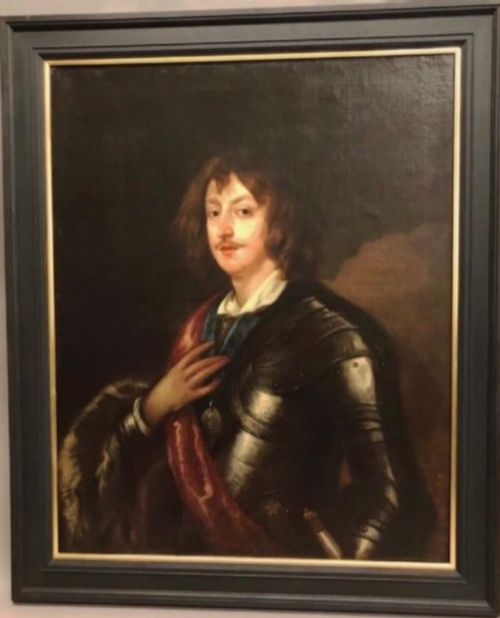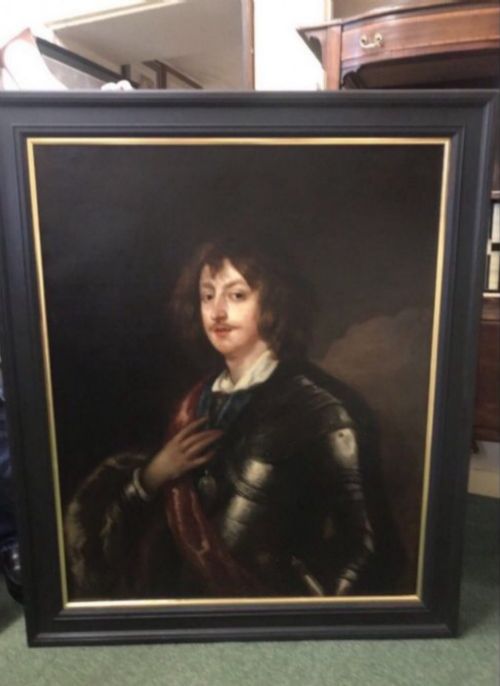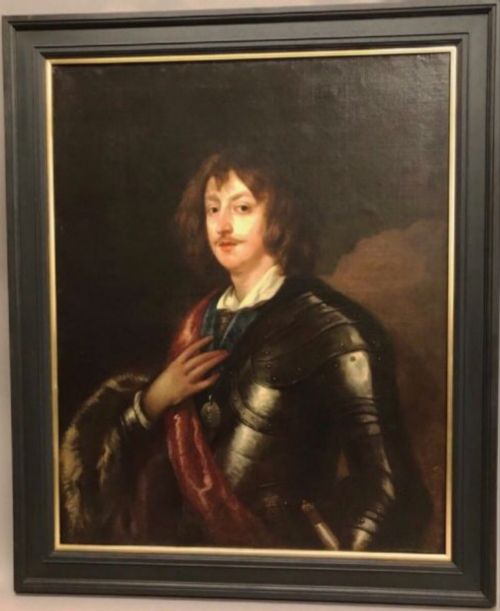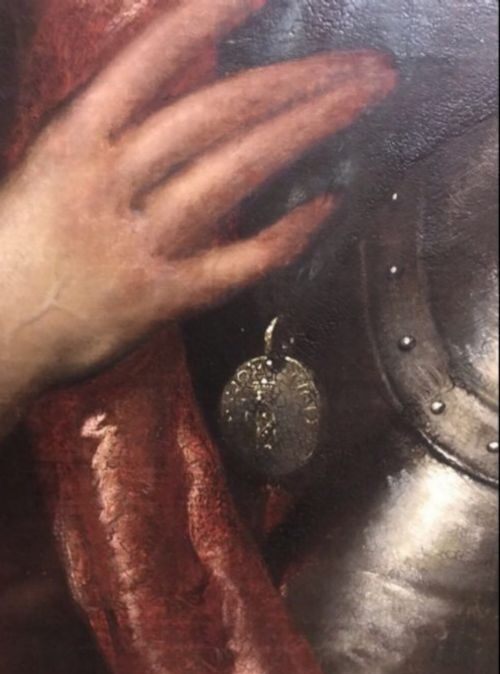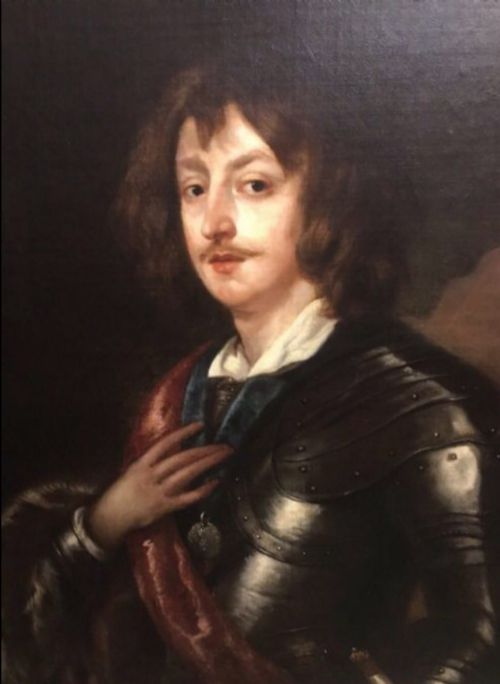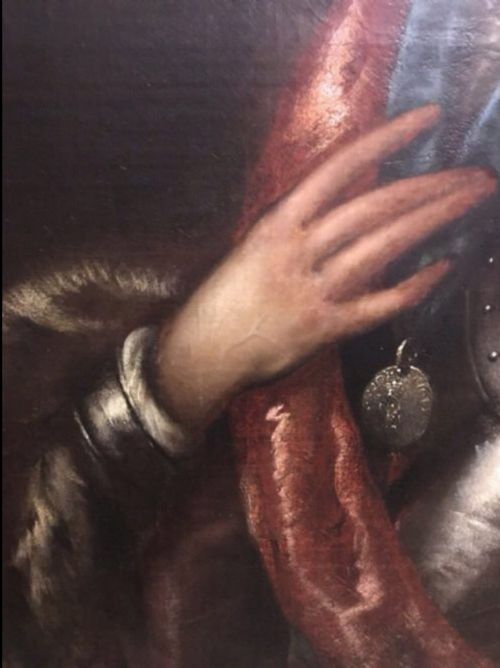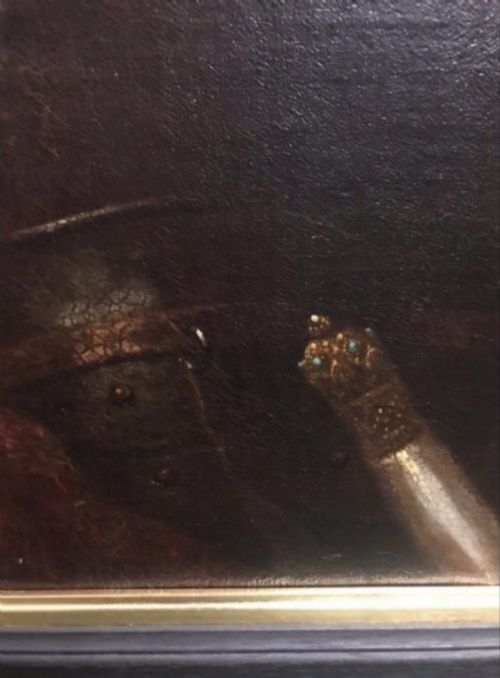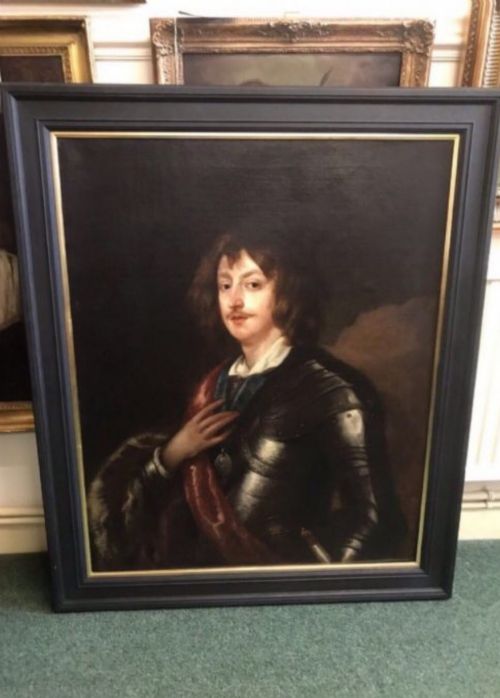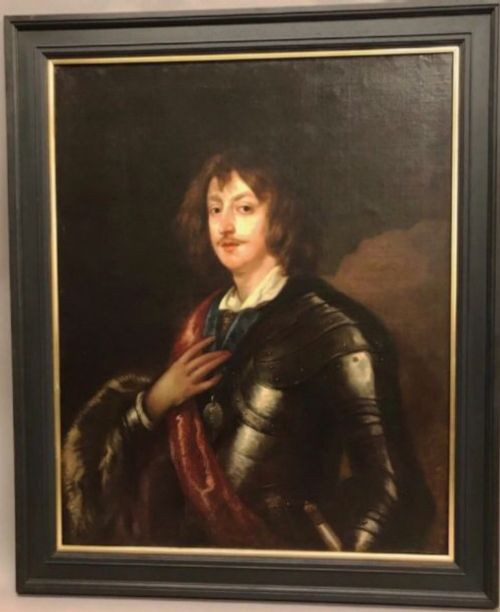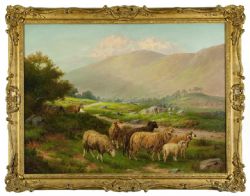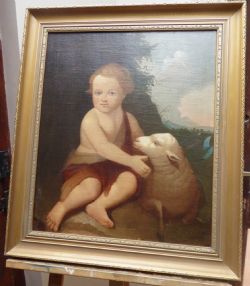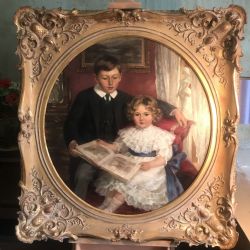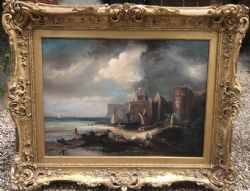Anthony Van Dyck (After) George Digby Sec State To Charles I 17th Oil Portrait Painting
Price
SOLDItem Ref
CLC/010
Description
This fine important historical portrait of Lord George Digby closely resembles another similar work which has come to be known as a ‘swagger portrait [ Dulwich Picture Gallery London c 1638 ] where Digby is portrayed wearing a rustic coloured cloak.Also reference Collection Snowshill Manor & Garden, Gloucestershire ( Accredited Museum) SW National Trust [NT 1336472]
-
In these examples the face is painted in a startlingly ‘real’ manner and is set off by the generalised glamour of Digby’s cloak, swept over the shoulder to suggest a Roman toga, and painted with broad, bravura brushwork.
-
Our example depicts Digby with an almost
identically rendered facial expression and pose but with him wearing his suit of armour and burgundy silk sash having a fur stole around his raised arm, the latter a somewhat familiar trade mark of artist Sir Peter Lely who continued as Court painter after the death of Van Dyck In 1641.
-
ABOUT
Sir Anthony van Dyck (Dutch 22 March 1599 – 9 December 1641) was a Flemish Baroque artist who became the leading court painter in England after success in the Southern Netherlands and Italy.
-
The seventh child of Frans van Dyck, a wealthy Antwerp silk merchant, Anthony was precocious as a youth and painted from an early age. In his late teens he was already enjoying success as an independent painter, becoming a master in the Antwerp guild in 1618. By this time he was working in the studio of the leading northern painter of the day, Peter Paul Rubens, who became a major influence on his work. Van Dyck worked in London for some months in 1621, then returned to Flanders for a brief time, before travelling to Italy, where he stayed until 1627, mostly based in Genoa. In the late 1620s he completed his greatly admired Iconography series of portrait etchings, mostly of other artists. He spent five years after his return from Italy in Flanders, and from 1630 was court painter for the archduchess Isabella, Habsburg Governor of Flanders. In 1632 he returned to London to be the main court painter, at the request of Charles I of England.
-
ABOUT THE SITTER
George Digby, 2nd Earl of Bristol, KG (bapt. 5 November 1612 – 20 March 1677)
Digby enjoyed a prominent political career, serving as Secretary of State to Charles I during the first English Civil War. He was also a poet and wrote a number of plays. He wrote a poem in praise of the beauty of his sister-in-law, Lady Venetia Digby, when she died. Van Dyck's painting of her on her deathbed hangs nearby.
-
George Digby, the son of the Earl of Bristol, was born in 1612. Elected to the House of Commons he was an opponent of Charles I until the arrest of Thomas Wentworth, Earl of Strafford. He now became a close associate of the king and recommended the arrest of the Five Members (Arthur Haselrig, John Pym, John Hampden, Denzil Holles and William Strode) in January 1642.
On the outbreak of the Civil War Digby joined the Cavaliers and fought at Edgehill (October, 1642). He was given command of the Royalist northern forces and after being defeated in 1645 he sought refuge in France.
Digby became a close adviser to Charles II and served as his Secretary of State in exile. He was dismissed from this post after becoming a Roman Catholic in 1657. and died in 1677.
-
FRAMED MEASUREMENTS:
Height 46.25 Inches ( 117 cm )
Width 38.5 Inches ( 98 cm )
-
DELIVERY :
By Fine Art Courier ( Allow 7-10 Days ) £80
-
TELEPHONE ENQUIRIES: 07547 617528
-
STOCK REFERENCE CLC/010
-
Payments Accepted By Bank Transfer & Debit / Credit Cards
PAY-PAL Or CHEQUES Drawn From Uk Accounts
Internal Ref: CLC/010
Dimensions
Height = 117 cm (46")Width = 98 cm (39")
Depth = 5 cm (2")
This item is SOLD and is no longer available to purchase.
SEND EMAIL *
